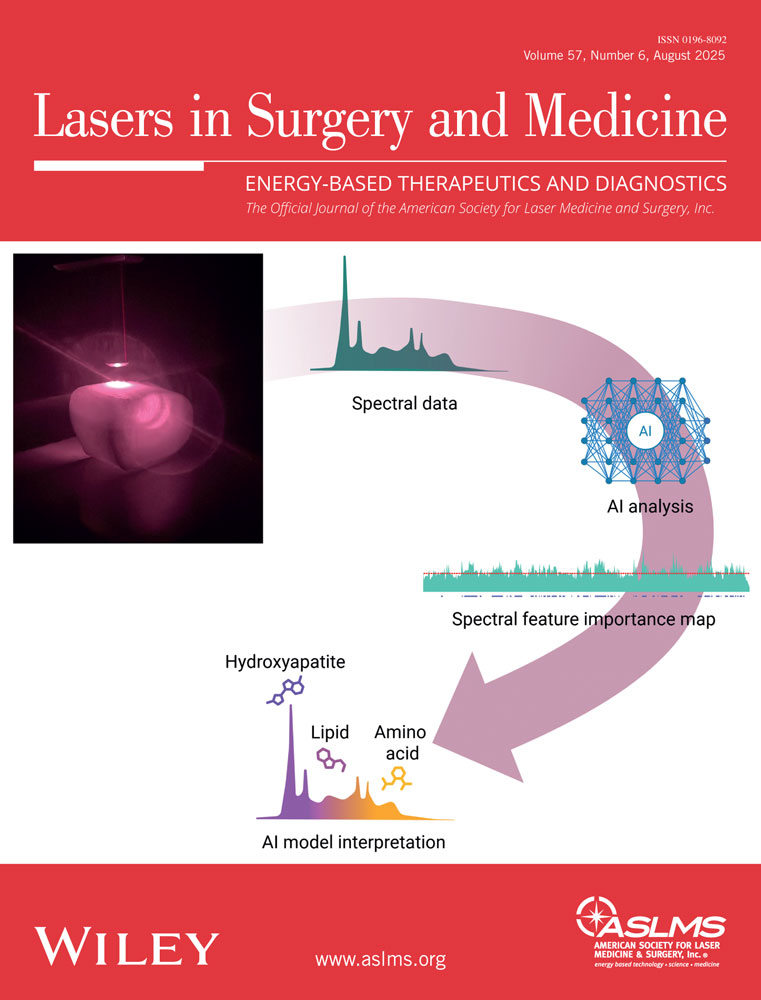Transurethral Nd:YAG laser prostatectomy with a laterally firing fiber: Local effects on tissue associated with erectile dysfunction
Abstract
Background and Objectives: Transurethral laser prostatectomy is anticipated to become a recognized alternative to conventional transurethral resection of the prostate. However, the effects of this procedure on the nerves of the pelvic plexus and erectile dysfunction remain unaddressed. The objective of this study was to evaluate the effects of laser energy on extent of prostatic damage as well as injury to periprostatic cavernosal nerves and erectile dysfunction in a canine model.
Study Design/Materials and Methods: Six adult male mongrel dogs underwent transurethral laser prostatectomy at 30 (n = 3) and 40 (n = 3) watt power settings. Total laser energy delivered varied between 6,000 and 13,800 joules. Erectile function was evaluated by pelvic nerve stimulation at 2, 4, and 8 weeks. Animals were then sacrificed to assess histopathology of the prostate at each time point.
Results: Histopathologic changes were noted in the prostate in a dose-dependent manner and did not vary with different laser power settings. In dogs that received ˜10,000 J, substantial prostate ablation confined within the capsule was achieved in every prostate gland. Adequate erectile responses were noted in five of six animals; all received < 10,000 J. In one animal that received a total dose of 13,800 J, an erectile response was not obtained, and histology revealed both prostatic capsule perforation in close proximity to the cavernous nerves and thermal neural damage.
Conclusions: We conclude that cavernous nerve damage may result from excessive doses of laser energy during transurethral laser treatment of the prostate gland. In canines, the upper limit for periprostatic injury is between 10 and 14,000 joules. © 1995 Wiley-Liss, Inc.




